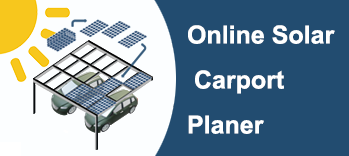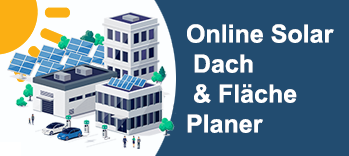Technological leap through leapfrogging: Europe's and Germany's chance for technological transformation despite China's dominance
Xpert pre-release
Language selection 📢
Published on: November 24, 2025 / Updated on: November 24, 2025 – Author: Konrad Wolfenstein

Technological leap through leapfrogging: Europe's and Germany's chance for technological transformation despite China's dominance – Image: Xpert.Digital
Europe's last chance? How we can catch up technologically through leapfrogging
The Leapfrog Effect Explained: How China Simply Skips Technological Development Stages
While Europe is still debating the modernization of existing infrastructures, China has long since created facts on the ground: Welcome to the era of the “Leapfrog effect”.
A glimpse into a modern Chinese logistics center is like stepping into a science fiction world: Thousands of autonomous robots whiz through hall-filling racking systems, controlled by artificial intelligence that anticipates bottlenecks before they even arise. Human forklift drivers? Nowhere to be seen. China isn't optimizing the old ways – it's bypassing them entirely.
This phenomenon is called "leapfrogging." It describes the strategy of simply skipping entire technological development stages—such as traditional fixed-line networks or semi-automated warehouses—in order to jump directly to the most advanced available technology. Driven by the government's "Made in China 2025" strategy, China has thus secured a dominant global market position in record time: from a 90 percent market share in solar modules to dominance in electric vehicle batteries and 5G networks.
But for Germany and Europe, it's not too late. The analysis shows: We are at a critical turning point. Europe's strengths – engineering expertise, industrial base, and quality standards – combined with its own leapfrog strategy, could be the key not only to catching up but also to regaining technological sovereignty. But how exactly does this leap into the future work, and what radical steps are now necessary to succeed in the competition between systems?
What is the Leapfrog effect and how does it work?
The leapfrog effect describes the phenomenon where a country, company, or region skips entire stages of development and focuses directly on cutting-edge technologies instead of going through traditional transition phases. The English word "leapfrogging" literally means "jumping the cart" and illustrates this leap across several developmental stages.
This concept works particularly well when the necessary technology is already available and economically viable, when older technologies are obsolete, or when it's more economical to jump directly to the latest solution. The key is that modern technologies can often be implemented more cost-effectively and efficiently than historically grown structures burdened with outdated infrastructure.
A classic example of successful leapfrogging is telecommunications in Africa. Many African countries never developed a comprehensive fixed-line network infrastructure like those common in Europe and North America. Instead, they jumped directly to mobile technology and mobile internet. Today, around 60 percent of the population in sub-Saharan Africa has internet access exclusively via smartphone. This number is projected to grow to 623 million users by 2025, demonstrating the effectiveness of this leap.
How does China utilize the leapfrog effect in warehouse logistics and smart warehouses?
China is consistently and systematically applying the Leapfrog principle to its logistics. The country is skipping the phase of semi-automated warehouse systems and established warehouse technology, which are still widespread in many European countries, and instead directly implementing state-of-the-art, fully automated smart warehouse solutions.
The concrete picture looks like this: while traditional European warehouses still operate with manual order picking, simple conveyor systems, and basic management systems, Chinese companies are already building warehouses with autonomous transport robots. These robots move independently through the warehouse, intelligently controlled sorting systems automatically separate packages according to their destination, and fully automated picking systems load goods without human intervention.
Particularly impressive is the integration of artificial intelligence, IoT connectivity, and real-time data. JD.com, one of China's largest e-commerce giants, uses over a thousand autonomous mobile robots in its logistics centers. The company also employs intelligent sorting systems and driverless transport vehicles. Aliaba's logistics subsidiary, Cainiao, recently opened the largest smart warehouse in Southeast Asia, located in Thailand. These systems can process millions of data points per second, predict bottlenecks, and optimize operations in real time.
The effect is dramatic: While European warehouses might need years to modernize old systems, Chinese companies have already implemented the next generation of logistics. They save costs, increase speed and accuracy, and thus create a huge competitive advantage.
LTW Solutions
LTW offers its customers not individual components, but integrated complete solutions. Consulting, planning, mechanical and electrotechnical components, control and automation technology, as well as software and service – everything is networked and precisely coordinated.
In-house production of key components is particularly advantageous. This allows for optimal control of quality, supply chains, and interfaces.
LTW stands for reliability, transparency, and collaborative partnership. Loyalty and honesty are firmly anchored in the company's philosophy – a handshake still means something here.
Suitable for:
China's industrial power in 2025: Where the world can hardly compete so far
Which industries does China already dominate, and to what extent?
China's dominance extends across an impressive range of industries, encompassing both traditional industries and forward-looking technology sectors.
China has achieved a dominant position in energy technology and green industries. In the solar industry, the country controls 88 to 90 percent of the global market share for solar modules. In 2024 alone, China installed over 329 gigawatts of solar capacity, more than all other top 10 markets combined. By the end of 2024, a total of 890 gigawatts of solar power capacity had been installed in China, and with the addition of 210 gigawatts in the first half of 2025, the 1,000-gigawatt mark was exceeded for the first time.
China controls approximately 70 percent of the global market for electric vehicle battery production. CATL, the leading Chinese manufacturer, held a market share of 37.5 percent of all EV batteries produced worldwide in 2025. Together with BYD, these two companies control over 66 percent of the global market. Europe produces only about 13 percent of the world's batteries.
In terms of electromobility in general, China sold over 12.8 million vehicles with alternative drive systems in 2024, of which 40.9 percent of all new registrations in China were electric vehicles or plug-in hybrids. Domestic manufacturers such as BYD and Li Auto have long since overtaken the major Western automakers.
In the telecommunications sector, China installed over 2.34 million 5G base stations by 2024, representing approximately 70 percent of the world's 5G infrastructure. This gives China the world's largest 5G market with 750 million users.
In 2024, Chinese companies installed approximately 295,000 industrial robots, representing 54 percent of all newly installed robots worldwide. China also took the lead in the manufacture of industrial robots, with a market share of 57 percent. The operational stock of industrial robots in China exceeded 2 million units in 2024.
The Chinese company DJI dominates the global drone market with a market share of approximately 70 to 80 percent. China practically has a monopoly on civilian drones, both in the consumer and commercial sectors.
In traditional industries, China produces over 60 percent of the world's crude steel. The country is the world leader in shipbuilding, accounting for over 50 percent of global shipping tonnage. China mines approximately 70 percent of all rare earth elements and processes about 90 percent of them.
In biotechnology, 28 percent of all clinical trials worldwide already originate in China. The volume of completed deals in this sector rose to US$66 billion in 2024. China has also overtaken the US in cancer research.
China controls not only the mining but also the processing of rare earth elements, thereby gaining strategic control over a critical material for global technology production. Germany imports two-thirds of its rare earth elements from China.
What is the “Made in China 2025” strategy and how does it contribute to dominance?
The “Made in China 2025” strategy is China’s master plan for economic and technological transformation. Adopted in 2015, this initiative aims to transform China from a low-value-added country into a high-tech innovation leader.
The strategy pursues an ambitious goal: By 2025, the share of Chinese manufacturers of core components and key materials in the domestic market is to rise to 70 percent. This means that China should become less dependent on imports. At the same time, the country aims to become a world leader in ten key strategic industries.
The nine central priorities of the strategy include improving manufacturing innovation, integrating technology and industry, strengthening the industrial base, promoting Chinese brands, enforcing green production, breakthroughs in ten key sectors, restructuring the manufacturing industry, promoting service-oriented manufacturing, and internationalizing manufacturing.
The Chinese government supports this strategy through massive investments, subsidies, and a strategic mindset. The plan is based on the integration of information technology and industry, with a focus on innovation, smart technology, mobile internet, cloud computing, big data, and the Internet of Things.
A key aspect is that China is strategically investing in foreign high-tech companies and actively acquiring technology. This is a significant difference from previous decades when China passively waited for technology transfer through foreign direct investment. Today, China actively purchases technology and expertise.
This systemic strategy, with state support, massive investments, and a targeted focus on high technology, has enabled China to innovate faster than individual Western companies operating in market competition.
Our EU and Germany expertise in business development, sales and marketing
Industry focus: B2B, digitalization (from AI to XR), mechanical engineering, logistics, renewable energies and industry
More about it here:
A topic hub with insights and expertise:
- Knowledge platform on the global and regional economy, innovation and industry-specific trends
- Collection of analyses, impulses and background information from our focus areas
- A place for expertise and information on current developments in business and technology
- Topic hub for companies that want to learn about markets, digitalization and industry innovations
Leapfrogging as an opportunity: How Europe can become a leader despite being behind
Where do Germany and Europe currently stand in technological competition?
Europe and Germany find themselves in a complex position. On the one hand, German and European companies possess considerable strengths in areas such as mechanical engineering, engineering expertise, quality standards, and the industrial application of technologies. With its Industry 4.0 concept, Germany has a solid theoretical and practical foundation for the digital transformation of industry.
On the other hand, market shares show that Europe is losing considerable ground in many future-oriented industries. In battery production, Europe holds only 13 percent of the global market, while China controls 70 percent. To maintain technological sovereignty, Europe would need a share of at least 40 percent.
In 2021, China's exports of machinery reached €210.1 billion, while Germany maintained its position but did not dominate. China is continuously expanding its market share, particularly in EU countries outside of Germany. In the first five months of 2025, German machinery exports to China fell by 6 percent.
A similar picture emerges in robotics: With 27,000 installed units in 2024, Germany was still the fifth-largest robot market worldwide, but the number fell by 5 percent. China, on the other hand, is growing by 7 percent annually, and average annual growth of 10 percent is projected for the period up to 2028.
In the area of AI development, a 2022 Bitkom study assessed that 22 percent of German logistics companies were already using AI, while another 26 percent were planning to implement it. This shows that Germany is a leader in certain application areas. However, overall, only about 13.5 percent of European companies use AI technologies, indicating considerable untapped potential.
Europe currently has two key weaknesses in innovation policy: speed and scale. Too many regulatory requirements, complex approval processes, and a fragmented market structure slow down innovation. At the same time, European technology platforms comparable to those of American or Chinese giants are lacking.
However, Europe has already recognized the need for action. In November 2025, at the Digital Summit in Berlin, Germany and France announced 18 new strategic partnerships in the field of AI, with a total investment volume of over one billion euros. SAP, the largest European software company, announced a collaboration with the French AI provider Mistral AI.
What are the chances for Europe and Germany in leapfrogging?
Europe and Germany certainly have a chance to catch up technologically through intelligent leapfrogging. The opportunity lies not in simply implementing all modern technologies faster, but in identifying areas where Europe has structural advantages and leveraging them strategically.
First, Europe possesses one of the world's strongest industrial bases. While China has often developed "greenfield" industries, achieving maximum modernization, Europe has an ecosystem of established companies with engineering expertise, a focus on quality, and industrial experience. These companies can strategically leverage leapfrogging to combine their core competencies with new technologies.
Secondly, Europe has opportunities in regulation and standards-setting. European AI regulation through the AI Act is often portrayed as an obstacle, but it could also be used as an advantage. Europe can establish standards that gain global acceptance and thus lead markets instead of merely following them.
Thirdly, there is a great opportunity in digital sovereignty. While the US and China control their own ecosystems, Europe could build a third, European ecosystem based on trust, data protection, cybersecurity, and ethical standards. This is a market for which there is strong demand.
Fourth, Europe should leverage leapfrogging in specific application areas. The logistics sector in Germany has already demonstrated that 22 percent of companies are using AI. Here, Germany could transition more quickly to modern, fully automated smart warehouses without prolonging the semi-automation phase.
Fifth, a great opportunity lies in fundamental technology. Although China is faster in its application, Germany and Europe still have a lead in basic research and the development of revolutionary technologies. This is where the focus should be.
Sixth, leapfrogging enables Europe to break free from outdated structures. In some sectors, old infrastructure hinders modernization. A strategic leap to entirely new systems could be faster than a gradual modernization.
Which specific areas of action should Europe and Germany prioritize?
Based on the analysis, Europe should prioritize several areas of action to enable successful leapfrogging.
First, AI development must be strengthened, especially industrial AI applications. The Franco-German Digital Summit 2025 has already sent a clear signal. It's not just about developing AI models like ChatGPT, but about integrating AI into the core of industrial value creation. Sectors such as robotics, autonomous vehicles, manufacturing optimization, and drug development offer significant opportunities for European Leapfrog strategies.
Secondly, Europe should massively expand battery production. With a market share of only 13 percent and a target of 40 percent by 2030, there is an urgent need for action. Instead of gradually modernizing the old technology, Europe should invest in state-of-the-art gigafactories with the latest technologies and maximum automation.
Thirdly, Europe needs to build or strengthen its microelectronics value chain. Vertical integration is required, from chip design to manufacturing. This presents a real opportunity for leapfrogging if Europe implements modern production processes from the ground up.
Fourth, Europe should increase investments in quantum computing, 6G, and other future technologies. China and the US are investing massively. Europe could regain technological leadership through basic research and innovation in these areas.
Fifth, regulatory simplification must prioritize innovation. Too many rules slow development. A “regulatory pause” for experimental technology development, combined with sandboxes for safe testing, could increase speed.
Sixth, Europe should strengthen the capital market for technology startups. European startups often lose talent and capital to the US and China. A European capital markets union could better finance European technology companies.
Seventh, digital sovereignty must be achieved through infrastructure. Cloud data centers, AI gigafactories, and secure data platforms under European control are strategically necessary. SAP's announced €20 billion investment in sovereign cloud solutions is a start.
Eighthly, Europe should actively promote leapfrogging in logistics and smart warehouses. Instead of gradually modernizing old warehouse systems, new logistics centers with maximum automation, AI control, and autonomous robots should be built.
How can Europe combine its industrial strengths with modern technologies?
This is the central question. The answer lies in the fact that Europe should not try to imitate China by copying it, but should instead utilize its own strengths.
European industry excels in innovation, quality, reliability, and engineering. These are crucial qualities in highly advanced, complex systems. A smart warehouse, an autonomous vehicle, or a medical device are not simple mass-produced goods. They demand extremely high quality, reliability, and innovation.
Herein lies Europe's opportunity: Traditional German machine manufacturers like Siemens, Bosch, or Würth could combine their engineering expertise with modern automation technologies, AI, and IoT. They could not only supply European markets but also offer high-quality solutions globally.
The same applies to mechanical engineering, pharmaceuticals, and medical technology. These sectors don't need less technology; they need smarter technology. A pharmaceutical company that uses AI for drug development, a medical technology company that offers AI-based diagnostics, or a mechanical engineering company that develops intelligent, self-optimizing production systems can be a global leader.
The opportunity, therefore, does not lie in Europe being faster than China, but in Europe being more intelligent, of higher quality, and more trustworthy.
What role do European partnerships play in successful leapfrogging?
European partnerships are crucial. The Franco-German Digital Summit 2025 demonstrates that Europe has recognized that individual countries are too small to compete globally.
The SAP Mistral AI partnership, for example, combines German enterprise software expertise with French AI innovation. This is an example of how European forces are pooling their resources more effectively. Similar alliances should be formed between hardware manufacturers, software companies, research institutions, and startups.
This is also the way Europe can enable faster leapfrogging: not individual countries, but a European ecosystem that combines strengths.
Leapfrogging as a European strategy
The leapfrog effect is not just a phenomenon China is exploiting, but a strategic concept Europe can also adopt. The opportunity lies not in competing with China by doing the same things faster, but in Europe leapfrogging more intelligently: by focusing on high-value industrial applications, digital sovereignty, European partnerships, and foundational technologies. While China leads quantitatively, Europe can lead qualitatively. That is the real opportunity in leapfrogging.
Your global marketing and business development partner
☑️ Our business language is English or German
☑️ NEW: Correspondence in your national language!
I would be happy to serve you and my team as a personal advisor.
You can contact me by filling out the contact form or simply call me on +49 89 89 674 804 (Munich) . My email address is: wolfenstein ∂ xpert.digital
I'm looking forward to our joint project.
☑️ SME support in strategy, consulting, planning and implementation
☑️ Creation or realignment of the digital strategy and digitalization
☑️ Expansion and optimization of international sales processes
☑️ Global & Digital B2B trading platforms
☑️ Pioneer Business Development / Marketing / PR / Trade Fairs
🎯🎯🎯 Benefit from Xpert.Digital's extensive, five-fold expertise in a comprehensive service package | BD, R&D, XR, PR & Digital Visibility Optimization

Benefit from Xpert.Digital's extensive, fivefold expertise in a comprehensive service package | R&D, XR, PR & Digital Visibility Optimization - Image: Xpert.Digital
Xpert.Digital has in-depth knowledge of various industries. This allows us to develop tailor-made strategies that are tailored precisely to the requirements and challenges of your specific market segment. By continually analyzing market trends and following industry developments, we can act with foresight and offer innovative solutions. Through the combination of experience and knowledge, we generate added value and give our customers a decisive competitive advantage.
More about it here:

























